Gear
Mount Tamalpais: The Bay Area's Trail Running Mecca
Testing the Lycan Mountain Running Shoe on Mt. Tam’s varied flanks.
As a recent transplant to Berkeley, CA from Boulder, CO, assimilation to life in a big city is progressing more quickly than I ever imagined. This is by far the most densely populated area I’ve ever lived in and the constant hustle and bustle of things is quickly becoming my new norm. But, the aspect of Boulder I miss the most (other than my close group of friends) is Boulder’s proximity to mountains.
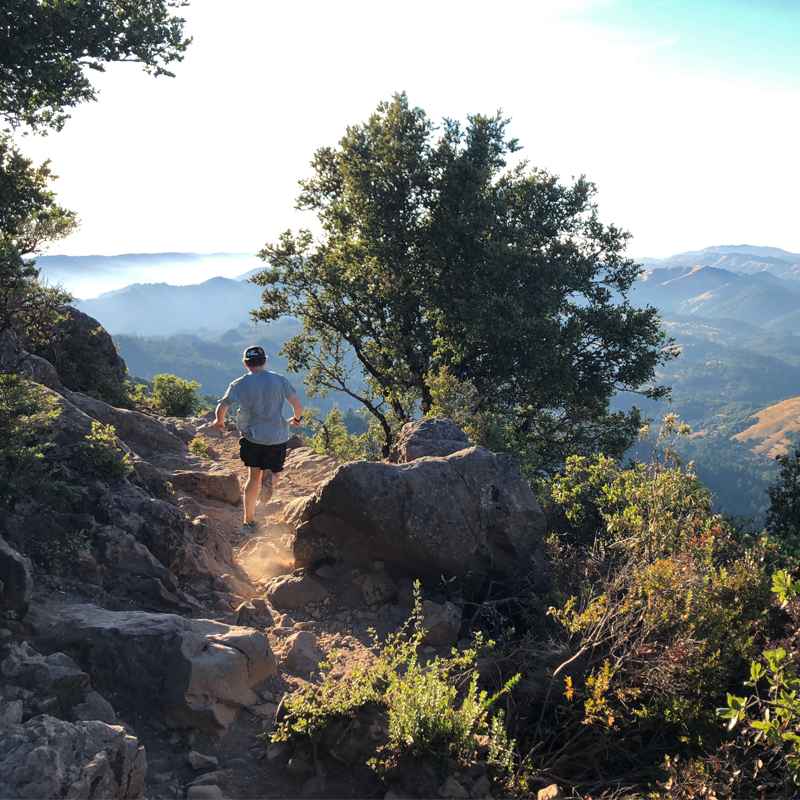

Here in the Bay Area, Mount Tamalpais (“Mt. Tam”)— towering 2,571 feet above the Pacific Ocean and the tallest peak in Marin County— is blanketed with over 100 miles of trails for hiking, trail running, and otherwise escaping the concrete jungle. I figured the 8.7 mile out and back trail that climbs 2,446 vertical feet from Muir Woods National Monument to the summit of Mt Tam’s East Peak would be a fun mission to test La Sportiva’s new Lycan Mountain Running Shoe.
The first mile and change served as an almost euphoric warm up as I meandered through the old-growth redwoods on Mt. Tam’s southeast flank. I immediately noticed the Lycan’s weightlessness with each stride and was pleasantly surprised at how comfortable and supportive the fit was right out of the box. As the pitch steepened and the humidity began to take its toll, the ultra-breathable mesh upper proved invaluable and kept my unusually sweaty feet from getting clammy. Once I breached timberline, the breathtaking views of the entire Bay Area became fairly distracting, making it hard to focus on properly landing one foot in front of the other.
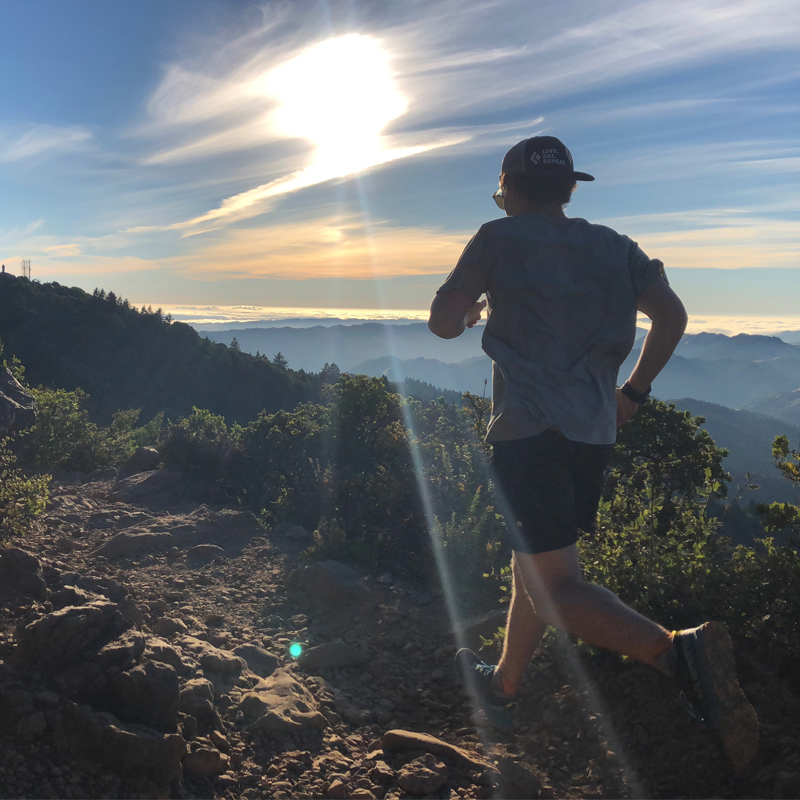

I was amazed at how the sticky rubber on the sole allowed for precise shifts in weight as I bounded from rock to rock on the final .3 mile push up the Plank Walk Trail to the summit. The view from the summit was beautiful, but what goes up must come down. On the descent, the Lycan’s rock guard outsole with Impact Brake System offered some much-needed relief as I hammered my way back down to the car.
The varied terrain and drastic vertical relief of this route was a proper testing venue to really feel out this shoe. I recommend both the trail and the shoe. The trail also made me hungry. A heaping plate of Puerto Rican comfort food at Sol Food in San Rafael on the way back home was the tastiest, but maybe slightly counterproductive, end to a strenuous but pleasurable day in my new backyard.
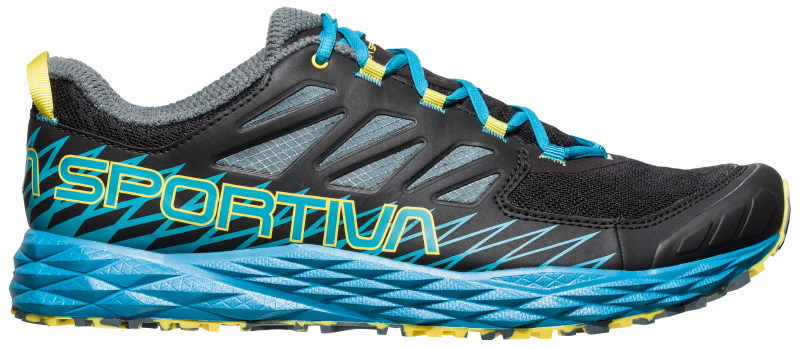

Lycan Mountain Running Shoe retails for $115.00
.....
Nat Houston is an outdoor loving, maple syrup slurping, East Coast native who grew up skiing at Bromley Mountain just outside his hometown of Landgrove, Vermont. After graduating from the University of Colorado in 2014, he stuck around Boulder for business and pleasure, working for companies like Freeskier Magazine and Dynafit, but mostly skiing and climbing in the vast mountains of the American West. Today, he lives in Berkeley, CA so he can explore the mountains of California and the Pacific Northwest, sample the local taco offerings, and write gear reviews for Warren Miller Entertainment.
What's In My Pack: Dash Longe

Name: Dash Longe
Birthday: June 27, 1985
Homebase: Salt Lake City, Utah
Occupation: Professional Skier, Licensed Realtor
Sponsors: Volkl, Marker, Dalbello, HiBall Energy, Tender Belly, BCA, Stio
Dash Longe grew up in the 90’s, spending his pivotal years stomping around Squaw Valley and Alpine Meadows near his home in Tahoe City, California. All Dash wanted to do as a kid was go big, and going home wasn’t a question. Dash says that some nights he “even slept in the locker rooms,” at his local hills. Talk about some serious dedication to the pow.
As a teenager rising up in the freeskiing ranks, Dash was determined to push his boundaries on the snow, and more importantly in the air. Dash’s fearless ability to go for bigger and bolder moves, combined with his fun-loving attitude are two key factors behind his successful career as a professional skier.
While Dash is now famous for his skills on a pair of planks, he is no stranger to the single board life. Growing up Dash and his twin brother, Hunter, were all about having a good time and shredding side-by-side, Dash skiing and Hunter snowboarding. Ironically, Dash will tell you that his motivation to take his skiing to the next level stemmed from his long-time passion for skateboarding. Dash says that skate films, like "Chocolate Tour" and "Welcome to Hell", had some of the biggest impact on his skiing, as well as snowboarding films, such as "Decade" and "The Resistance".
Today, Dash has made a home for himself at Alta/Snowbird in Salt Lake City, Utah. Not only has living in SLC allowed Dash to be in close proximity to some of the best mountains North America has to offer, but it has also given him the opportunity to pursue a career outside of skiing. When Dash isn’t carving up the mountains, he’s selling slopeside properties as a licensed realtor. It seems that no matter the situation, the mountains always have a hold on Dash’s life.
While Dash has been in an impressive amount of ski films throughout his career, most recently he shot with the Warren Miller crew for the 2018 film, Volkswagen presents Warren Miller’s Face of Winter.

What skis are you riding on these days?
Volkl BMT 122 (1) and a Confession (2) for resort skiing.
What’s your favorite thing about skiing in Utah?
Alta and Snowbird. The snow quality, access from city life (versus small ski town), and side country is on point!
What snacks can be found in your pack at any given time?
HiBall Energy Water (3) gets me fired up without the jitters of a strong coffee, and I feel good about drinking it because the ingredients are organic and thoughtfully sourced. I'm also very addicted to the new Tender Belly Pork Jerky (4), which is like a bacon in a bag. It's unreal.
Whether you’re in the backcountry or on some groomers, what is the at-all-times item you have with you?
Tender Belly Pork Jerky. I'm so hooked...

What are your favorite on-mountain accessories?
I always have a buff on me. I'm also a mitten guy. I feel like I ski better in them. I just dig being all bundled like a kid on a snow day. I've been rolling a Royal Gore-Tex Mitt (5) from POW Gloves, and they're super toasty.
How do you like to layer up on the days when the weather can’t make up its mind?
The buff is the first thing I ditch when I heat up. I rock Stio base layer (6) everyday and just swap out either a quarter zip (7) or the Stio Azura packable puffy midlayer (8) based on temp and windchill. A light packable mid-layer is always good to have in the pack though.
When you’re in the backcountry what is the most important piece of safety equipment in your pack?
Beacon (9), shovel (10), and probe (11) are 100% mandatory, and those are always in my BCA Float pack (12) whenever I go to the hill. You never know when you might end up out-of-bounds or going for a walk. I always have my phone on me too.

Dash ripping it up with Points North Heli. Photo courtesy of Court Leve.
What’s your favorite catch phrase to use when you see a sweet line?
I really like to refer to lines and airs I'm seeing as various cuts of meat. It often helps to illustrate the vision quite nicely while keeping my goals vague (I hate claiming, its cooler just to ski lines).
As a father and a pro skier, what is one tip that you can give to parents teaching their young ones to ski?
Don't push too hard and make sure you come in when they're smiling. The goal is for them to leave the hill wanting more!
....
Catch Dash Longe in Volkswagen presents Warren Miller’s Face of Winter this fall.
Holiday Gift Guide '17
Gift giving ideas from the staff at Warren Miller Entertainment for the 2017 holiday season.
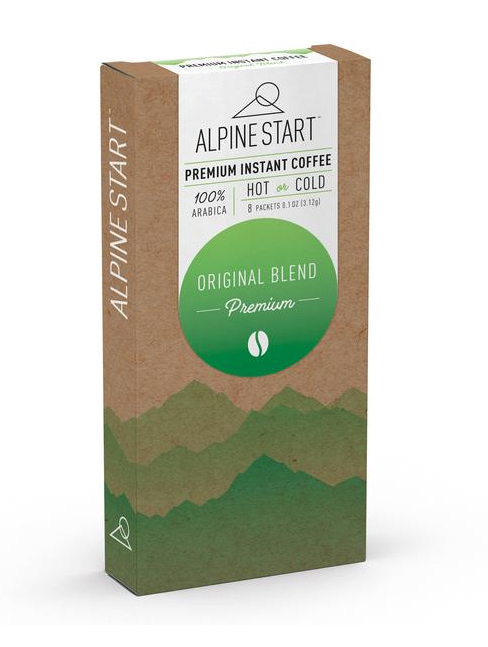
Alpine Start Instant Coffee
“Ideal stocking stuffer for any coffee lover you know. Alpine Start Instant Coffee is not your usual instant coffee in that it genuinely tastes delicious and freshly brewed. One box comes with 8 packets of coffee, which are great for when you’re camping, adventuring in cold weather or just need a pick-me-up mid-day at the office. Package it with a camping mug and you’ll have knocked this inexpensive gift it out of the park.” $9.00 – Jessi Hackett, Marketing and Communications Coordinator

Gelrups The Slip On
Since I bought these amazingly warm slippers for my wife, she has never been happier – or warmer. They are comfortable, warm and the perfect thing to put on after a long day skiing or hiking. $95.00 - Fig Stokes, Director of Operations and Distribution

Melanzana Micro Grid Hoodie
"I bought this as a mid-layer for skiing but have ended up using it every month of the year. From transitional workdays to cold camping nights, I take this with me wherever I go. It’s warm, comfortable, and so beloved that it’s unfortunately out of stock until Spring 2018. Sign up to get it then before they run out!" $69.00 - Julie Bynum, Account Manager – National Partnerships

Patagonia Black Hole Duffle Bag
"This bag is awesome for weekend getaways to just about anywhere. It holds everything you need and is compact enough you can store it easily. It is weatherproof, plus it also has shoulder straps so you can carry it on your back, making it so easy to carry around everywhere." $129.00 - Renee Geary, Partnerships & Operations Coordinator
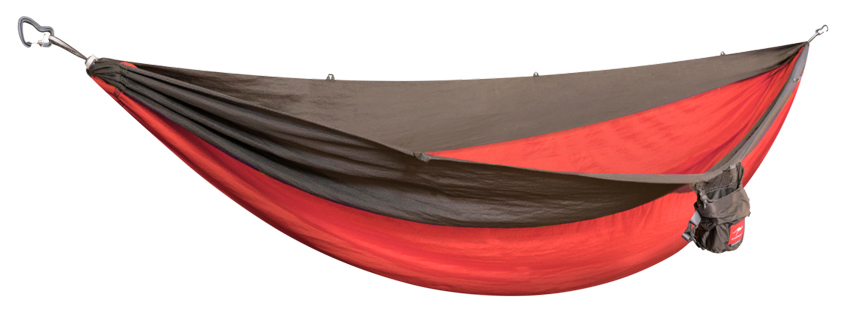
Kammock Roo Double Hammock
"Camping hammocks are all the rage right now and make great gifts and stocking stuffers for the outdoor enthusiast in your life. They fold up very compact and are typically very light which makes it easy and convenient to bring along on any type of outdoor excursion whether it be hiking, camping, backpacking, glamping, or even reading a good book in your front yard. Easy setup, all you need are two big stout trees to attach your hammock ends too. Don’t have two big stout trees in your front yard, get out there in to nature and find some!" $69.00 - Ian Anderson, Associate Producer

Gosling’s Family Reserve Old Rum
"There is rum, and then there is the Old Rum… and this stuff is delicious. Pairs perfectly with sitting around the fire and one upping your buddies with pow stash slay stories or calming down your spouse when you tell them about the deal you got on the 5th pair of skis in your quiver." $85 - Andy Hawk, Managing Director

Hydro Flask 32oz. and Wide Mouth Straw Lid
"I used to be against buying expensive water bottles but then my girlfriend forced me to get a Hydro Flask. You have to get the straw lid, which is $10 extra but you won’t look like a peasant screwing open your water bottle only to have most of it spill all over your new holiday sweater." $40, + $10 for the Lid - Sam Robards, Independent Promotions Coordinator

Women’s Scarpa Gea RS
“I’ve come to think this is the touring boot that does it all—hikes light but skis hard. The goal this year is to get in the backcountry as much as possible, which means I need the perfect pair of boots that can keep my feet comfortable mile after mile and still allow me to confidently make some ski turns. These are them. Extremely lightweight without compromising performance on the downhill. This would be the ultimate gift to that adventuring gal in your life.” $795.00 – Jessi Hackett, Marketing and Communications Coordinator

KUIU Icon Pro 5200
"When it's time to runaway from your relatives this holiday Kuiu has your back. This full-featured multi-day pack is as ready as you will ever be to get lost in the backcountry. Holidays are full of all types of baggage but you can count on this pack to have the right accesories to keep you trudging right on through to 2018. $199.99 - $499.99 - Peter Haggstrom, Digital & Grassroots Marketing Coordinator
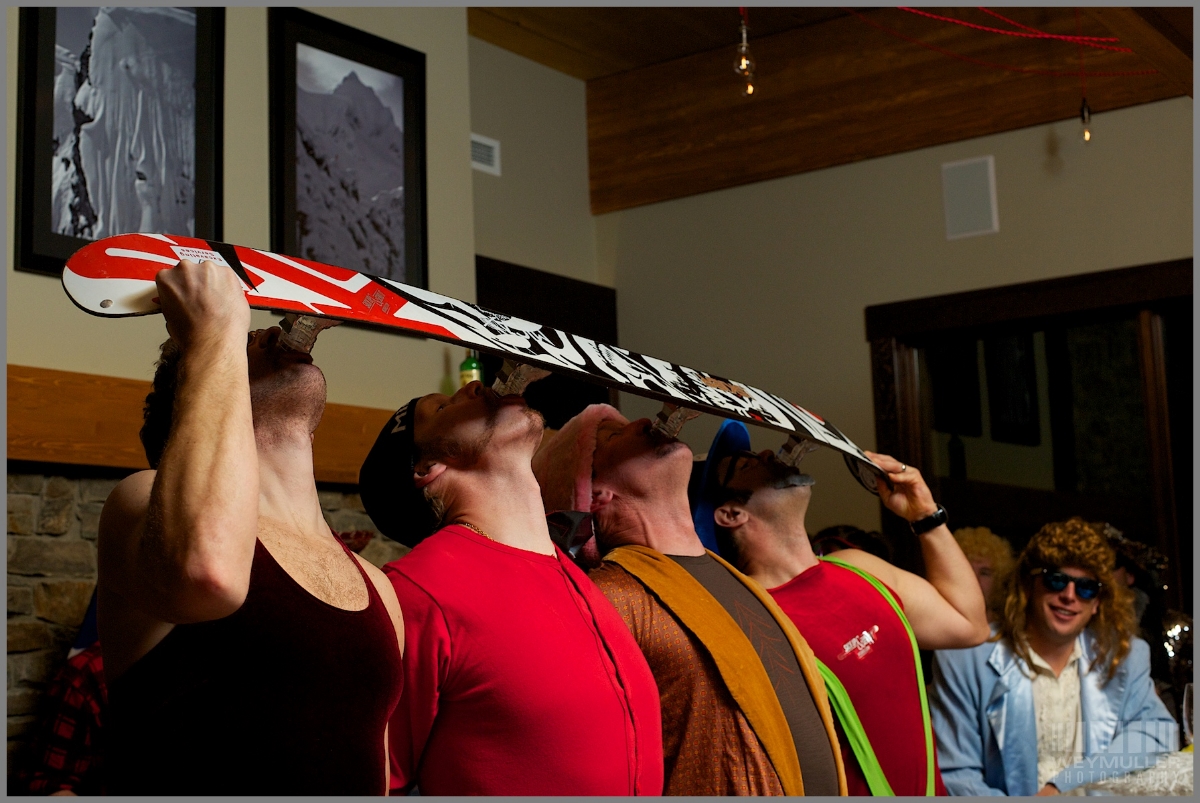
ShotzSki
"Great for Après Ski. You know you are going to have a good time if you bring along a ShotzSki to your next Après party or if you are feeling a little more mellow a single ski boot shot glass is pretty awesome too!" $9.95-$175 - Renee Geary, Partnerships & Operations Coordinator

Line of Descent
For 68 years, ski families have cheered on the official kickoff to winter with the ski film company that started it all and this year is no different. As the family grows, the traditions grow richer in Volkswagen presents Warren Miller’s Line of Descent. Deeper and fresher than ever. - $24.99
60 Years Of Film Technologies: Clip of the Week
From 8mm film to helicopters, lots of different technologies have been used to make sport films what they are today.
Click HERE to watch hundreds of clips on our YouTube channel.
MIPS Enhances Ski Helmet Safety
Developed in conjunction with Swedish neurosurgeon Hans von Holst, MIPS technology mimics the brain’s protective mechanisms to enhance the safety of helmets.
Skiers have traditionally worn helmets only when required (e.g., small children, competitors). Yet over the last few years, as helmets get stylish design makeovers and safety awareness increases, skiers and snowboarders have become more receptive to helmets on the ski hill. This season, however, there is an even better reason to don a protective shell: Swedish brain protection company MIPS (Multi-directional Impact Protection System) has been adopted by a number of helmet makers to enhance the safety of their helmets.
Far beyond just another color option or headphone-integrated helmets, MIPS was developed in conjunction with Swedish neurosurgeon Hans von Holst. In 1997, von Holst, who was tired of seeing similar brain injuries in athletes, began to investigate how to build a safer helmet. His focus became attempting to mimic the brain’s protective mechanisms based on the way cerebrospinal fluid cushions the brain against rotational impact.
Not many skiers fall in a direct, vertical impact on their head, but they do hit fixed objects at oblique angles quite a bit. In fact, rotational impacts account for the vast majority of accidents and subsequent brain injury. The brain’s built-in protective mechanism allows the brain to slide after impact, on a layer of cerebrospinal fluid found between the skull and brain tissue. Most action sport’s impacts, however, vastly exceed the protective ability of this natural system.
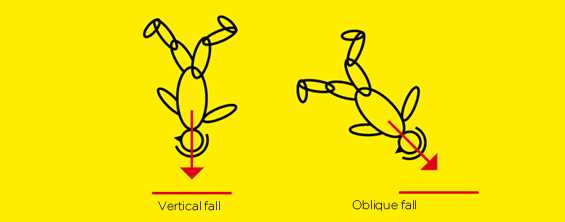
Not many skiers fall in a direct, vertical impact on their head, but they do hit fixed objects at oblique angles quite a bit.
Studying the brain’s built-in defenses, von Holst and his team of biomechanical engineers developed a corresponding amplification to be built unobtrusively into helmets. The result is a low-friction, movable layer between the liner and the helmet shell, which helps to decrease the rotational acceleration of your brain inside your skull after impact. According to MIPS, the system reduces the rotational impact on brain tissue by as much as 50 percent over a traditional helmet.
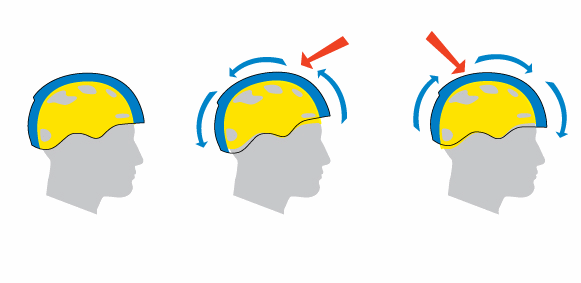
Biomechanical engineers developed a low-friction, movable layer between the liner and the helmet shell.
The first ski helmets equipped with MIPS were introduced in 2010, when Swedish body armor brand POC began building it into some of its top helmets like the Backcountry Receptor MIPS. It hasn’t taken long for other helmet makers to catch on and join POC: this year, MIPS-equipped ski helmet models are being offered by Red Burton, Sweet, TSG, and Scott.
As industry knowledge of MIPS increases, not only are more ski helmet makers signing on, but those in other sports are as well. From equestrian supplier Back on Track (which first debuted MIPS in 2009) to a recent collaboration with Italian off-road motorcycle company AIROH, as well as mountain and road-bike offerings from POC, Lazer, and other brands, the concept is gaining traction.
Now that multiple companies are offering multiple style and price-point options equipped with MIPS, athletes are more likely to find a helmet that fits their dig and their wallet. Red’s Hi-Fi MIPS helmet by Burton, begins at $149.95, and you never know: that few extra dollars spent today might save you a lot more cash tomorrow.
---
Did you enjoy this story? Subscribe to our email list to receive more articles like this, fresh content, film updates and more!
POV Cameras Are Changing The Game
Tiny, high quality, point-of-view, or POV cameras are in widespread use by amateurs and professionals. The POV perspective allows filmmakers to bring the audience in for a new, thrilling experience like never before.
When ski filmmaker and Warren Miller contemporary Dick Barrymore strapped a massive, counterweighted camera to his helmet in the 1960’s, it was a pioneering moment in action films. Today, tiny, high quality, point-of-view, or POV cameras are in widespread use by amateurs and professionals like Warren Miller Entertainment. The POV perspective allows filmmakers to bring the audience in for a new, thrilling experience like never before.
Not only have these little gadgets been adopted by professional movie crews, but amateurs and weekend warriors use them to share their experience with friends, or impress potential sponsors. Pro athletes use them to capture the action even when there isn’t a professional camera team around. “As a whole, I would say POV cameras have probably brought a greater level of excitement to the ski industry as well as a higher level of fulfillment,” said Warren Miller cameraman Colin Witherill.
It has been a long road from Barrymore’s enormous helmet cam. Even a decade ago, POV cameras were far below the quality of today. Professional photographers and filmers were excited when the cameras hit the market, but they left a lot to be desired when it came to quality, said Withrill. “But, they started to give camera operators numerous angle options that were otherwise not available, which is a great thing,” he pointed out.
Now, the quality of POV’s has reached a professional level, and several companies, such as Contour, GoPro, and Vio have given consumers differing options on what kind of camera to purchase. And if they have the skill on the snow as well as in the editing room, there is no limit to what can be achieved.
For his work with Warren Miller Entertainment or his own film company, Broadreach Images, Witherill said that POV cameras really open the options up as to how a story is told visually. “With action sports, especially those that involve speed and variable terrain, the cameras capture vantage points that have never been captured before, which can be quite thrilling. It also gives viewers a much better idea of how talented and precise the athletes have to be to do what they do.”
For cameramen in the field, the POV helps them increase the amount of options that they can then hand over to the field editors, according to Witherill. “It is always beneficial to have a POV running for that extra angle.”
The incredible and exciting advances in POV versatility, and especially in the quality of images captured has allowed filmers to access the kind of amazing shots and images that traditionally were only the realm of big-budget shoots. And the creative and technological evolution continues, keeping both filmers and viewers alike stoked. “I believe there is plenty of expansion in POV to be done in the near future. As camera size decreases and image quality continues to improve, we will have even more creative options,” said Witherill.
Ultimately, everyone can agree that POVs just add to the fun, whether for movie-goers, hopeful pro skiers, or innovative cameramen. Witherill points out their contribution to the stoke factor. “I know the more often I see someone getting some great pow, the more anxious and excited I am about getting some myself. It's always fun to relive some digger your buddy took as well. All and all, it adds to the experience both on an off the mountain.”
K2 Celebrates Its 50th Anniversary
Fifty years after its inception, iconic American ski company K2 is not only still going strong, but remains an industry leader in product innovation. K2 maintains its irreverent and humorous attitude – never taking the ski world too seriously, but today’s K2 engineers keep their eye on the ball, churning out progressive gear every season. By Brigid Mander
Fifty years after its inception, iconic American ski company K2 is not only still going strong, but remains an industry leader in product innovation. K2 maintains its irreverent and humorous attitude – never taking the ski world too seriously, but today’s K2 engineers keep their eye on the ball, churning out progressive gear every season.
The company has come a long way. K2’s founder, Bill Kirschner, started out making veterinary splints and cages with his father and brothers, and their company become a world-wide supplier of cages. By the 1950’s Bill and his brother Don had been experimenting with making fiberglass skis. They didn’t hit up on a concept that worked, however, until the early 1960’s.
In 1964, K2, named for Bill and his brother Don (2 Kirshners) and the peak K2, delivered 250 pairs of the Holiday, the world’s first fiberglass and foam core ski. This was a complete deviation from what European ski manufacturers were doing at the time, which was to plate traditional, stiff, wooden skis with fiberglass.
K2 recruited US World Cup racer Marilyn Cochran as one of the first skiers to ski on one of their protoypes. “I really liked the ski a lot,” says Cochran-Brown. “I loved the arc – they snapped around really quick. I could hit the K2 hard, and it would just snap around for me.” In 1969, she won the World Cup overall title in GS on her K2s. By 1971, K2 was doing its own distribution. The rest, of course, is history.
During its 50th year, the company has found itself in the company of a few other half century-old entities – like lift service in powder mecca of Niseko, Japan, and another American icon, the Rolling Stones. K2 has been marketing the first of four limited edition skis, a Rolling Stones topsheet on the Sideshow and Sidestash skis.
Playing on the idea that K2 has been a leader in rocker ski technology, and the Rolling Stones have just been leading the musical rocker world for decades, it became an ideal-and fun-partnership. K2 also released a book, titled “50 Years of Serious Fun” about its history.
“The 50th anniversary book project for us was definitely a deep dive into the psyche of the brand,” Jeff Mechura, K2’s head of global marketing, told ESPN.com earlier this winter. “What's even cooler is that the people that make K2 what it is today aren't much different from back then. The people then were connected and passionate, similar to those who are here now who love what they do. That's why we're calling the anniversary book "50 years of Serious Fun.”
From a garage to being a global, influential in its industry, publicly held company, K2 has changed the ski world, for the better, and remains an inspiration to have fun on the snow.
Phantom Camera Technology Captures Extreme Slow Motion
This season, we're using the new Phantom Flex camera technology to capture on-snow action in new ways and bring a new look to this year’s movie.
New technology has touched just about every part of skiing, from evolving gear and outerwear used on the snow, to the way athletes train, and how filmmakers capture the skiers and snowboarders. This season, Warren Miller Entertainment made the decision to employ the relatively new Phantom Flex camera technology to capture on-snow action in new ways and bring a new look to next year’s WME feature film.
The WME crew used the Phantom at this winter’s shoot at the Canyons, in Park City. According to Josh Haskins, the producer of the film, the crew was very excited to be able to add this kind of cinematography to the movie. WME was “thrilled to be using this camera, and embracing cutting edge technology in general. It is an exciting time in the digital world; camera technology changes so quickly, it's incredible what is available compared to just a couple years ago,” said Haskins.
The Phantom Flex allows forensics level slow motion in HD. The WME crew used the camera at 1000-2000 frames per second during the Canyons shoot. Real time action is captured in 24 frames per second, to give a little perspective on the capability of the camera.
“Everyone has probably seen a gun fire or a water balloon pop at this frame rate, but skiing is entirely different,” explained Haskins. For most ski movie aficionados the effect will be a new type of imagery. “Watching snow peel away and engulf the skier at an extremely slow rate of speed creates an amazing visual effect. The images appear to be frozen in time, with an almost 3D quality to them,” he said.
Since the entire camera package used during the Canyons shoot runs about a quarter million dollars to purchase, the equipment used was rented for the duration. According to Haskins, the images it creates are worth the expense, but with the rate of change in the world of digital imagery, not being locked into a system is also a nice option to have available.
The crew needed the experience of camera assistant Logan Schneider and Director of Photography Chris Patterson to make the Phantom shoot flow smoothly. The footage from each shot has to be downloaded to an attached cinemag before the next shot can be taken. The time spent on the process, however, will be worth it, according to the crew.
The athletes were also excited to be a part of the new imagery, taking the extra delays in stride. “Blake Nyman, Kaylin Richardson, Julian Carr and Keely Kelleher were amazing to work with. They hit their mark every time, which is super important with a camera like this, and were patient with the lengthy camera set up time,” said Haskins. The new visual effect will be a part of next year’s film.
Airbags and Avalanche Safety
Some people have argued that an airbag is a false sense of security and could lead to skiers taking greater risks, but many industry experts disagree. By Brigid Mander
The idea for the airbag was developed in the 1970’s, by a German forest ranger. The company he formed is today known as ABS, one of the three major producers of airbags, along with Mammut/Snowpulse and BCA.
The basic concept behind airbags is simple – the best way to increase a skier’s chance of survival is to prevent burial. The airbags function as a flotation device keeping the person’s head above the moving snow. All airbags use either compressed air or nitrogen canisters, which are punctured and inflate a durable bag when the skier pulls the hand trigger. When properly deployed, the survival rate with airbags is nearly 97%.
Standard safety equipment for the backcountry has long been an avalanche transceiver, shovel, probe, competent partners and at least a basic understanding of snow science and current avalanche conditions. But now, airbags, long used in Europe, have clearly been making a big splash in the US.
As airbags become more popular, buyers can choose different options such as size of the pack, removable airbags, and type of trigger. Prices range from just under $700 to about almost $1300. “You need to figure out what pack will work best for you,” said John Slaughter, an avid backcountry skier and manager of Teton Mountaineering in Jackson, Wyoming, which sells airbag packs.
At Jackson Hole Mountain Resort, the tragic death of a patroller in an avalanche while doing control work in 2010 prompted the resort to adopt a safety policy of airbag packs for all its patrollers and alpine guides. The first ski resort in North America to do so, JHMR followed the steps of many cat and heli-ski ops that were already utilizing airbags.
Avalanche equipment is not usually a topic for mainstream, national news outlets. But after three well-known, experienced skiers were killed in an avalanche on Stevens Pass, WA, on February 19th, and a fourth skier survived due to the deployment of her avalanche airbag, backcountry safety protocol was center stage on the national news.
The tragedy of three deaths coupled with professional skier Elyse Saugstad’s survival after she activated her airbag shone a renewed spotlight on these devices, a tool skiers use to increase survival in avalanches.
Some people have argued that an airbag is a false sense of security and could lead to skiers taking greater risks, but many industry experts disagree.
Mike Rheam, a heli-ski guide in Alaska and avalanche forecaster with the Bridger Teton National Forest, says he recommends that any skier skiing in active avalanche terrain consider using an airbag. “False sense of security is a weak argument. Only a very small percentage of people will have confidence boosted by their gear. In reality, this is a safety tool.
However, Rheam does point out that about 25% of US avalanche fatalities are due to trauma. “Airbags are not likely to help in extremely large slides or in the areas with a lots of trees and rocks.”
When buyers have questions, Slaughter added that he makes sure to tell them “the airbag is your last measure of safety. You need to ski a slope because it is a good, informed decision, and not just because you have an airbag.”
2012 K2 Demo Days at CMH
CMH's K2 Demo Trip has rapidly become one of the most fun things they do all year…and they do a lot of fun things, so that is saying something!
"Hey, you should come up and test skis at CMH."
That was how the idea for the K2 Demo Trip started: Sitting on a couch at K2 Skis in Seattle talking about skiing and what types of skis work best for heli-skiing. Fast-forward two years and the K2 Demo Trip has rapidly become one of the most fun things we do all year…and we do a lot of fun things, so that is saying something!
Epic. The most fun ever. Life Changing.
These are few of the quotes we heard following the 2011 K2 Demo Week, an incredible week of skiing in the Monashees. Watch the movie now.
For 2012 we are going to switch it up a bit.
K2 Demo Days will take place at CMH Kootenay in March 2012. There will be two, 3-day sessions offered. As always, guests on these trips get to test a variety of unreleased K2 test skis. K2 designers will be on-hand, and will take your feedback to K2 Headquarters to fine-tune the skis.
Your reward for all this hard work?
A free pair 2012-13 K2 skis once they are released in Fall 2012.
2012 K2 Demo Days at CMH Kootenay (2 Sessions):
Session I: March 3-6, 2012 (3 days) Session II: March 6-9, 2012 (3 days) Price: $3,600 per session - including the free pair of K2 Skis!
Space is limited to 24 skiers per trip. All prices are per person based on double occupancy and in Canadian Dollars. Prices do not included taxes. Please ask us about other room types.
Want to get more info about K2 Demo Days as it becomes available? Thanks, Mark Piquette CMH Heli-Skiing
Thanks,
Mark Piquette
CMH Heli-Skiing
Mike Gutt
K2 Skis




